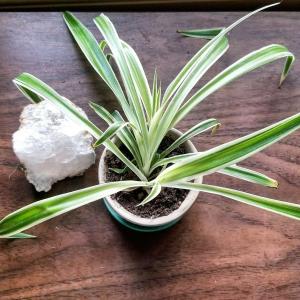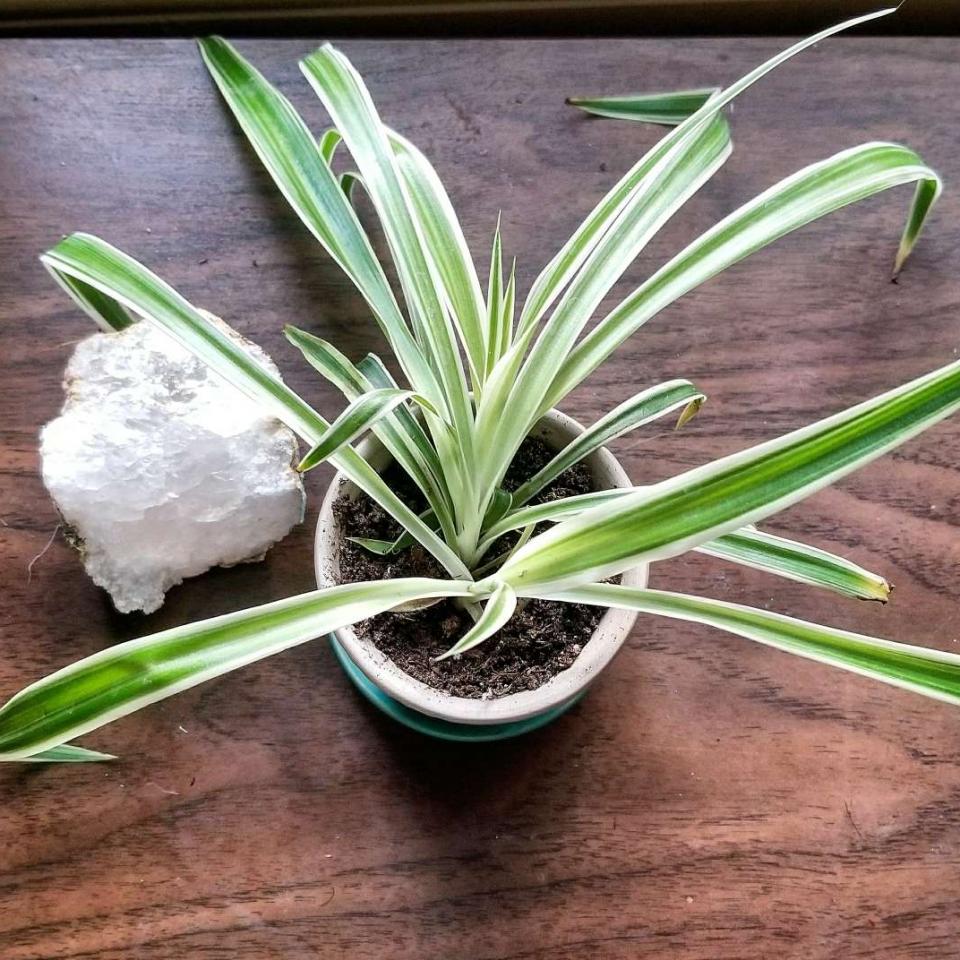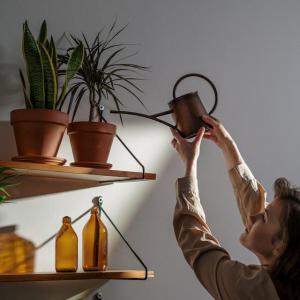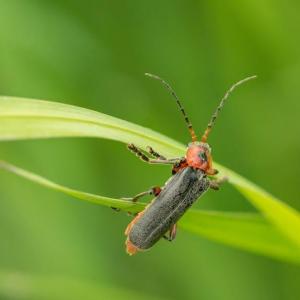Plant Experience
Detail
LIGHT
Spider Plants like medium to bright indirect light. Solid green Spider Plants need less light than variegated Spider Plants. No Spider Plant should ever be put in the direct sun.
WATER
The top 50% of the soil of the soil in a Spider Plant pot should dry out before you water. A good way to tell when a Spider Plant needs water is to look at the leaves. The green color in the leaves of a Spider plant starts to fade when the soil is dry. Water high in salts and chemicals causes brown tips on a Spider Plant. Never use water that had passed through a water softener for a Spider Plant.
FERTILIZER
Fertilize a Spider Plant once a month with a balanced plant food at 1/2 the recommended strength. Spider Plants need food only when they are actively growing. Feeding a Spider Plant too often causes the tips of the leaves to turn brown.
TEMPERATURE
A Spider Plant does well in temperatures between 45 to 80 degrees.
HUMIDITY
Spider Plants prefer high humidity but still do well in most homes and offices.
FLOWERING
A Spider Plant produces very small inconsequential white flowers at the ends of long stems. Spider Plant flowers are usually followed by the development of “baby spider plants.”
PESTS
mealy bug, spider mite, scale, and Aphids are plant pests that can infest Spider Plants. Spraying a Spider Plant monthly with the green solution helps prevent houseplant pests.
DISEASES
Spider Plants are rarely bothered by plant diseases.
SOIL
Spider Plants grow well in a good organic houseplant soil. An African Violet soil is very good for Spider plants also.
POT SIZE
Spider Plants like to be root-bound in small pots. Don't worry about repotting a Spider Plant until the roots have taken up the entire pot and the plant’s rhizomes have popped out of the soil.
PRUNING
If a Spider Plant produces too many "babies," you can cut them off and start new Spider Plants. Cut off any brown leaf tips that develop due to too much fertilizer or chemicals in the water.
Spider Plants like medium to bright indirect light. Solid green Spider Plants need less light than variegated Spider Plants. No Spider Plant should ever be put in the direct sun.
WATER
The top 50% of the soil of the soil in a Spider Plant pot should dry out before you water. A good way to tell when a Spider Plant needs water is to look at the leaves. The green color in the leaves of a Spider plant starts to fade when the soil is dry. Water high in salts and chemicals causes brown tips on a Spider Plant. Never use water that had passed through a water softener for a Spider Plant.
FERTILIZER
Fertilize a Spider Plant once a month with a balanced plant food at 1/2 the recommended strength. Spider Plants need food only when they are actively growing. Feeding a Spider Plant too often causes the tips of the leaves to turn brown.
TEMPERATURE
A Spider Plant does well in temperatures between 45 to 80 degrees.
HUMIDITY
Spider Plants prefer high humidity but still do well in most homes and offices.
FLOWERING
A Spider Plant produces very small inconsequential white flowers at the ends of long stems. Spider Plant flowers are usually followed by the development of “baby spider plants.”
PESTS
mealy bug, spider mite, scale, and Aphids are plant pests that can infest Spider Plants. Spraying a Spider Plant monthly with the green solution helps prevent houseplant pests.
DISEASES
Spider Plants are rarely bothered by plant diseases.
SOIL
Spider Plants grow well in a good organic houseplant soil. An African Violet soil is very good for Spider plants also.
POT SIZE
Spider Plants like to be root-bound in small pots. Don't worry about repotting a Spider Plant until the roots have taken up the entire pot and the plant’s rhizomes have popped out of the soil.
PRUNING
If a Spider Plant produces too many "babies," you can cut them off and start new Spider Plants. Cut off any brown leaf tips that develop due to too much fertilizer or chemicals in the water.
Album (1)

brielle
2017-10-11

This is my first growing diary.


Elite Article













